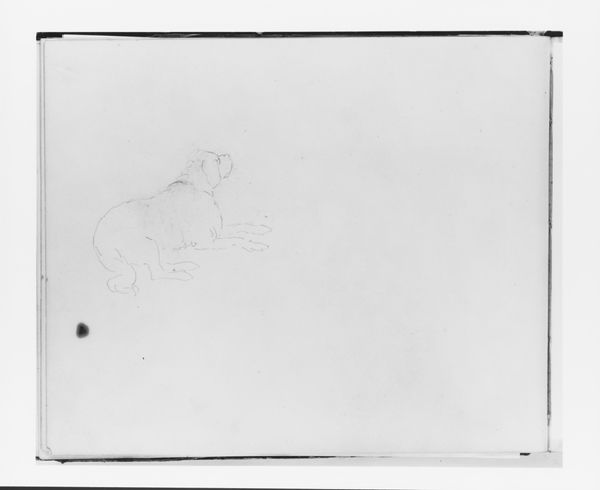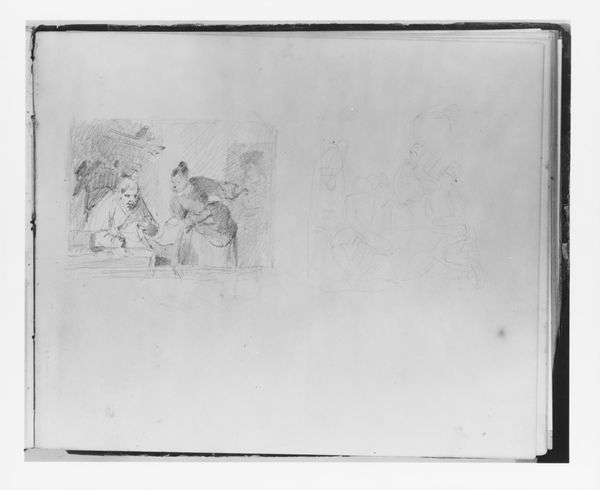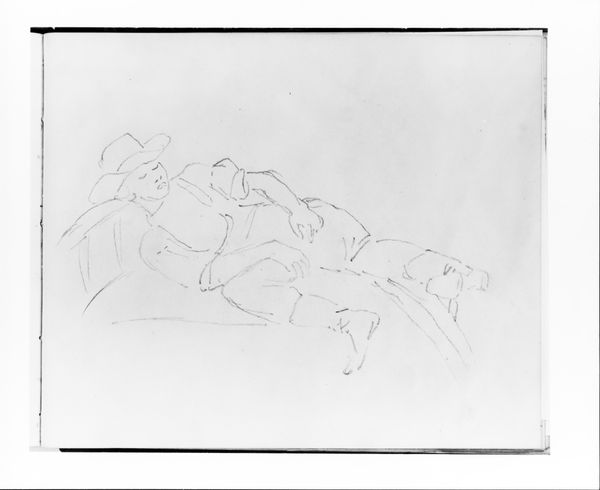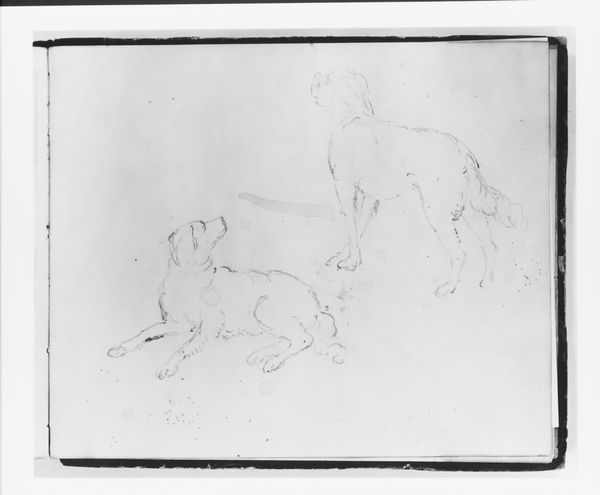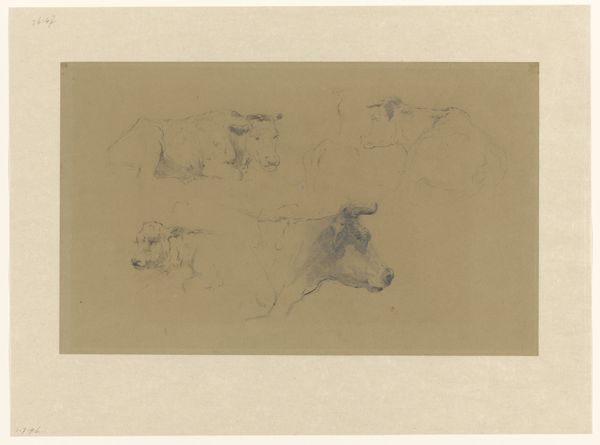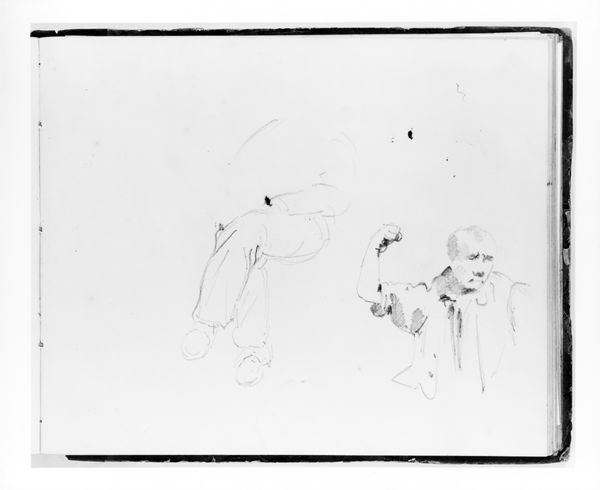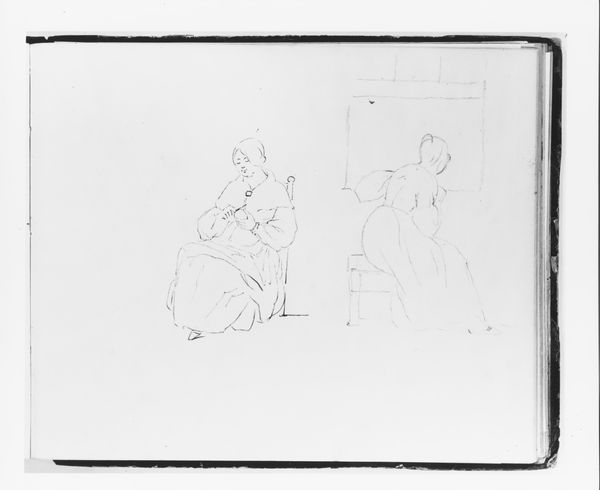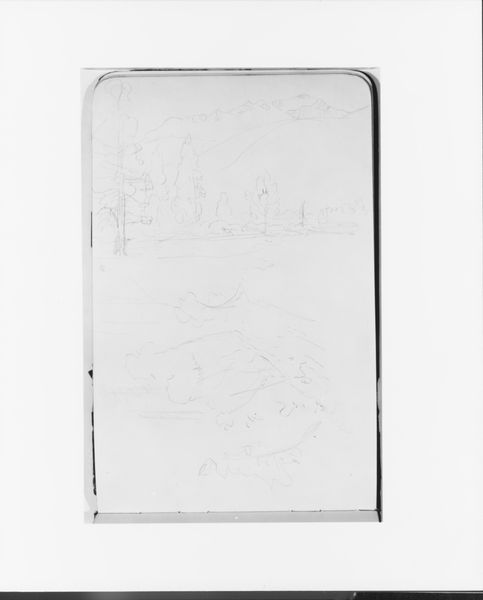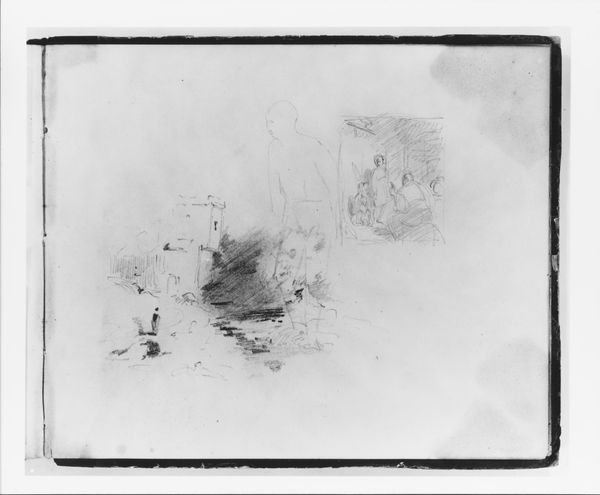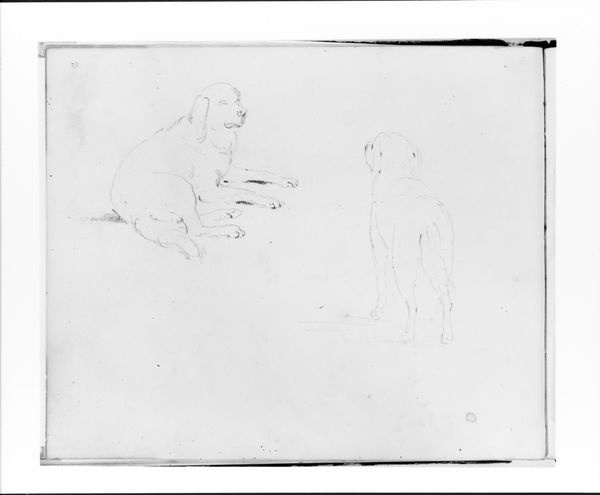
Two Studies of a Dog: Three Quarter Rear View Standing; Lying Down (from Sketchbook) 1835 - 1839
0:00
0:00
drawing, pencil
#
portrait
#
drawing
#
landscape
#
figuration
#
form
#
pencil
#
line
#
realism
Dimensions: 6 5/8 x 8 in. (16.8 x 20.3 cm)
Copyright: Public Domain
Editor: This pencil drawing from a sketchbook is called “Two Studies of a Dog” by Francis William Edmonds, dating from 1835-1839. I'm really drawn to the simple lines he's used. What stands out to you in this work? Curator: Primarily, I observe Edmonds' remarkable skill in capturing form with such economy of line. Notice how few strokes are needed to convey the essence of the dog’s anatomy and posture. The interplay between positive and negative space is particularly effective here; the unburdened areas emphasize the weight and volume of the forms that give the drawings a remarkable sense of completion despite the apparent sketchiness. Editor: So you're focusing on his technique and composition, right? I can see that. Curator: Precisely. I find the composition carefully balanced. The placement of the two studies is thoughtfully considered, creating a dynamic relationship across the page. How would you describe that dynamic? Is it a static or a kinetic layout? Editor: Hmm, good question. The way one dog is standing and the other is lying makes it more kinetic I think? Curator: Yes, I’d agree. The diagonal axis implied by the reclining figure effectively contrasts the more static verticality of the standing form, thereby enlivening the picture plane. Furthermore, the open-ended nature of a sketchbook suggests the idea of movement and constant revision; which speaks to your intuition as an observer. Editor: So, even in what looks like a quick sketch, the artist is thinking carefully about these elements? Curator: Indeed. What may appear to be a spontaneous outpouring of artistic vision is underpinned by compositional rigor and careful consideration of line, form, and spatial dynamics. Editor: I see it now! I wouldn't have thought about that on my own, but it really clicks once you point it out. Thanks!
Comments
No comments
Be the first to comment and join the conversation on the ultimate creative platform.
